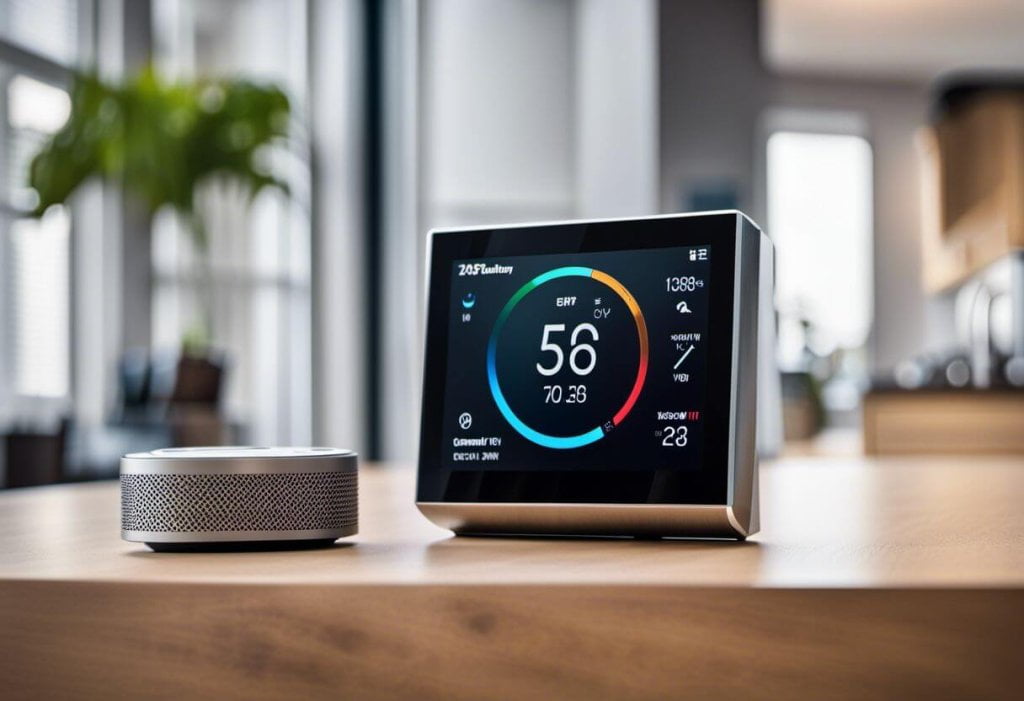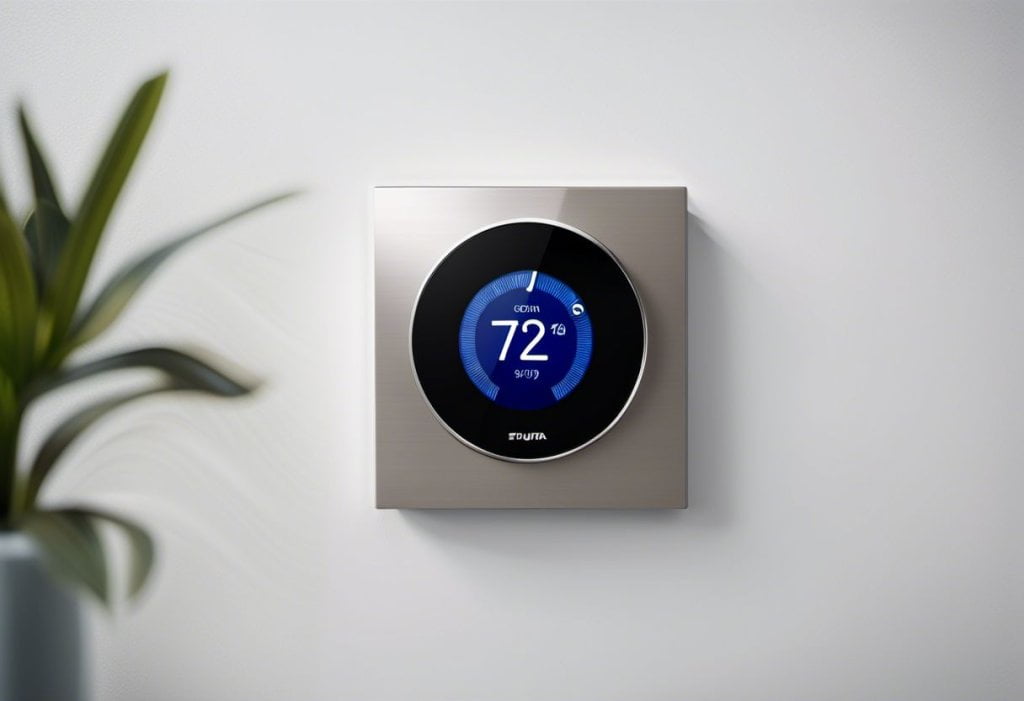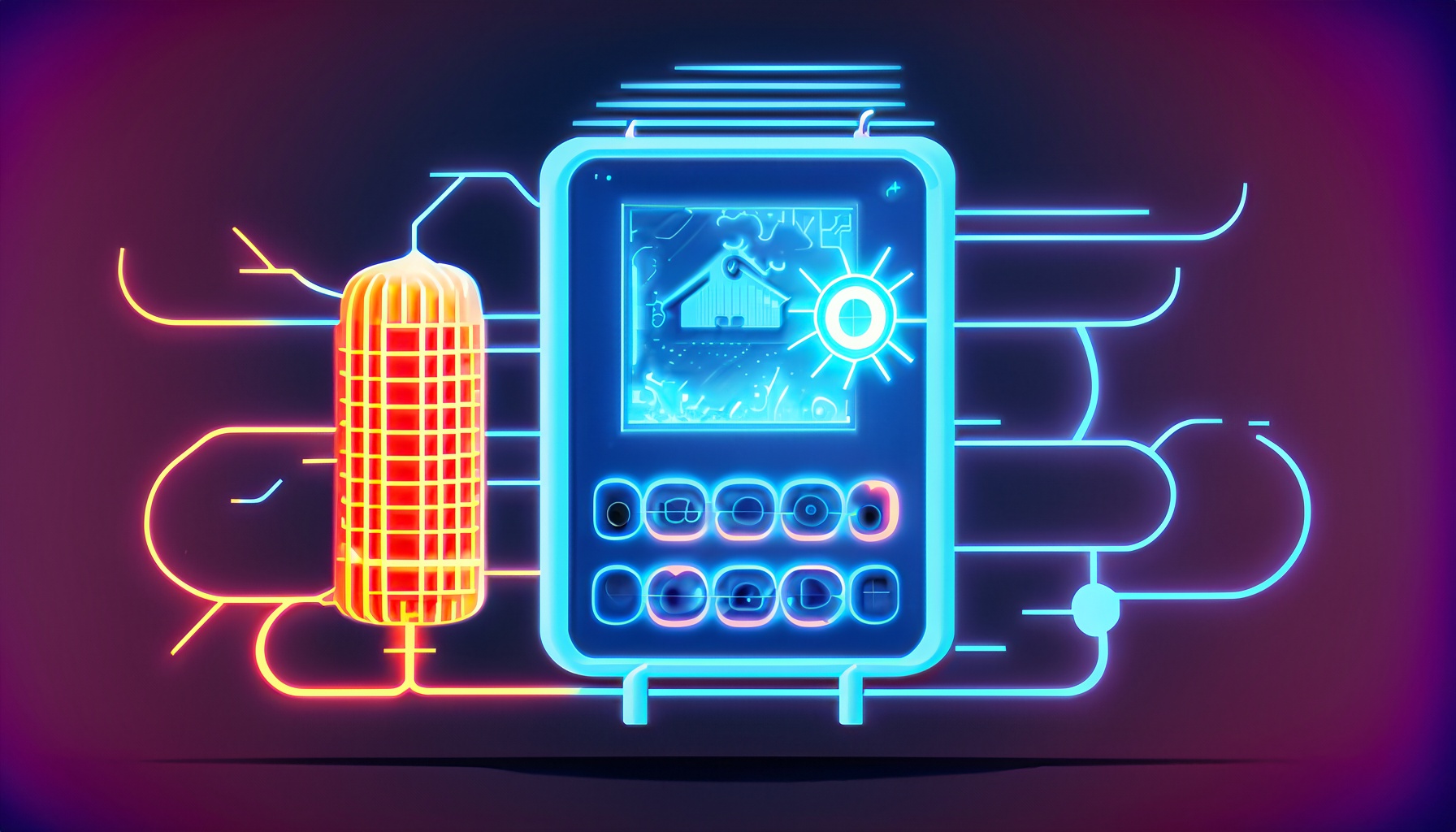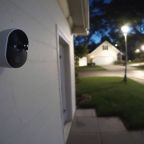Upgrading to a smart thermostat can be daunting with all the options available. With choices ranging from Honeywell to Nest, it’s hard to determine which is best for your heat pump.
This guide simplifies making that critical decision by outlining key factors such as design, compatibility, and price. Ready for an easier way to regulate indoor temperature? Dive in!
Understanding Heat Pump Thermostats
Heat pump thermostats work by regulating the heating and cooling of a heat pump system, allowing for energy-efficient temperature control in your home.
How heat pump thermostats work
Heat pump thermostats control your home’s heating and cooling operations by communicating directly with the reversing valve. The type of thermostat matters significantly because heat pumps require a specific one to function correctly.
Mechanical, electrical, and smart are the three main types available for heat pumps. Among them, smart thermostats have become quite popular due to their wifi connectivity, which allows homeowners to program settings based on daily schedules and weather conditions.
Advanced models even provide voice control features through Amazon’s Alexa assistant. Proper use of these thermostats can notably optimize an air-source heat pump’s performance while maximizing energy efficiency in your home.
Benefits of using a heat pump thermostat
Using a heat pump thermostat, particularly a smart one, can significantly enhance your home’s energy efficiency. It achieves this by regulating the operation of your heat pump based on specific needs or occupancy patterns in different parts of the house.
This means you won’t be unnecessarily heating spaces that aren’t being used, saving energy and cost.
Another significant benefit is enhanced comfort at lower room temperatures. A smart thermostat uses cutting-edge algorithms and sensors to learn about the user’s preferences accurately.
This allows it to adjust the temperature precisely according to these preferences, ensuring optimal warmth even when set at cooler degrees. These features make it worthy of being called the best smart thermostat for a heat pump.
Key features to look for in a smart thermostat
Selecting the best smart thermostat for your heat pump involves careful evaluation of crucial features.
- Compatibility: Ensure your smart thermostat works well with heat pumps, especially if it’s a heat pump with emergency heat.
- Dual operation modes: Opt for a device that controls heating and cooling modes for highly efficient energy use.
- Advanced scheduling: This feature allows you to customize your home’s temperature schedule to match your lifestyle and preferences.
- Energy-saving features: Look for advanced specifications, such as energy usage reports, learning algorithms, and geofencing, to help you save on utility bills.
- Smart home integration: Find a thermostat that seamlessly integrates with your home’s existing smart devices or platforms for added convenience and control.
- Wifi accessibility and remote control options: An excellent smart thermostat should allow you to adjust settings remotely using your smartphone or computer for maximum comfort and efficiency.
- Design and Aesthetics: The best smart thermostats have stylish designs that effortlessly complement various interior decors and are user-friendly.
- Price and warranty considerations: Compare prices across brands without compromising quality, functionality, or durability. Check the product’s warranty, as it can offer significant cost savings in case of malfunctions.
Compatibility and installation considerations
Compatibility with your specific system is crucial when choosing a smart thermostat for your heat pump. Not all thermostats are compatible with every heat pump model, so checking before purchasing is essential.
Easy installation and compatibility with your HVAC system should also be considered. Installing a smart thermostat should be hassle-free and shouldn’t require significant modifications to your existing setup.
Considering these compatibility and installation factors, you can ensure that the smart thermostat you choose will work seamlessly with your heat pump system.
It’s worth noting that not all smart thermostats support compatibility with heat pump systems. So, research and look for models specifically designed for use with heat pumps.
Wi-Fi accessibility and remote control options
Smart thermostats for heat pumps offer the convenience of wifi accessibility and remote control options. With wifi connectivity, homeowners can easily program their heating and cooling settings based on their daily schedules or weather conditions.
This means you can have your home at the perfect temperature before walking through the door. Remote control options allow you to take control of your heating and cooling system using your phone or voice commands from anywhere in the house.
Whether you’re upstairs getting ready for bed or downstairs cooking dinner, adjusting the thermostat is as simple as a few taps on your phone screen or a quick voice command. Say goodbye to running up and down stairs to adjust the temperature manually – these smart thermostats make it easy to stay comfortable with just a touch of a button.
Factors to Consider When Choosing a Smart Thermostat for Your Heat Pump

Consider the design and aesthetics, auxiliary power supply, programmability and connectivity options, support for heating and cooling, and price and warranty when choosing a smart thermostat for your heat pump.
Design and aesthetics
Finding a smart thermostat that performs well and looks great in your home is essential. The design and aesthetics of a thermostat can make a big difference in how it fits into your decor.
Whether you prefer a sleek and modern design or something more traditional, there are plenty of options. Some thermostats even allow for customization with various color options and interchangeable faceplates to find the perfect match for your style.
Remember, choosing a thermostat that matches your design preferences doesn’t mean sacrificing functionality. You can have style and efficiency when selecting the best smart thermostat for your heat pump.
Auxiliary power supply
The auxiliary power supply is essential when choosing a smart thermostat for your heat pump. The thermostat must be able to support the heat pump system’s emergency and auxiliary heat functions.
This ensures you have reliable backup heating in case of freezing temperatures or the heat pump cannot keep up with demand. Look for a smart thermostat specifically designed to work with heat pumps with features that allow for controlling and adjusting the use of auxiliary heat.
One recommended option is the Emerson Sensi wifi Smart Thermostat, which provides compatibility with auxiliary heat and offers advanced control over its usage.
Programmability and connectivity options
Smart thermostats offer programmability and connectivity options that enhance convenience and energy efficiency. With programmability, you can set specific temperature schedules to ensure optimal daytime comfort while reducing energy wastage.
Additionally, connectivity options such as wifi enable you to control and monitor your thermostat remotely through a smartphone app or voice assistant. This means you can adjust the temperature from anywhere in the house or even when you’re away, ensuring a comfortable environment whenever you need it.
Connecting your thermostat to your smartphone allows easier integration with other smart home devices, creating a seamless experience.
Support for heating and cooling
Smart thermostats that offer support for heating and cooling systems are essential for ensuring optimal comfort throughout the year. With this feature, you can easily control the temperature settings, whether you need warmth during winter or cool air during summer.
A thermostat that supports both functions means you no longer need to manually switch between modes or rely on separate devices for heating and cooling. This convenience simplifies your home’s climate control and helps save energy and reduce utility costs.
So, when choosing a smart thermostat for your heat pump, prioritize models that provide reliable support for heating and cooling operations.
Additionally, it’s worth noting that smart thermostats with advanced algorithms can automatically adjust temperature settings based on your preferences and daily routines. They can learn from your usage patterns to ensure maximum comfort without wasting unnecessary energy.
Price and warranty
Smart thermostats come at various prices, so it’s essential to consider your budget when choosing one for your heat pump. Prices can vary depending on the thermostat’s brand, features, and capabilities.
It’s also worth considering the warranty offered with the smart thermostat. A warranty provides protection and peace of mind in case of malfunctions or issues with the device.
Installation and Maintenance

Installing a smart thermostat for your heat pump is relatively straightforward, but following proper installation procedures is essential to ensure optimal performance.
Tips for installing a thermostat
Installing a thermostat is a straightforward process that can be done by following these simple steps:
- Turn off your HVAC system to ensure safety during installation.
- Pop off the faceplate of your old thermostat to access the wiring.
- Remove the backplate of the old thermostat and disconnect the wires.
- Add a C-wire to provide power for your new smart thermostat if needed.
- Follow the step-by-step instructions in the installation guide to connect the wires correctly.
- Attach the backplate of your new thermostat and secure it in place.
- Snap on the faceplate of your new thermostat, making sure it fits securely.
- Please turn on your HVAC system and test your new smart thermostat to ensure it functions properly.
Understanding thermostat wiring
The wiring diagram for a thermostat reveals that it needs 24V AC power. The wires going into the thermostat are color-coded, making the wiring process complex. To ensure a successful installation, always refer to the manufacturer’s instructions and wiring diagram before starting.
Following these guidelines will help you understand thermostat wiring and avoid potential issues.
Troubleshooting common thermostat issues
If you’re experiencing issues with your thermostat, here are some common problems and their solutions:
- Unresponsiveness after replacing batteries: Check if the batteries are inserted correctly and fully charged. If the problem persists, reset the thermostat or contact customer support.
- Blown fuses or tripped breakers in the electrical panel: Inspect the electrical panel and reset any tripped breakers. Replace blown fuses with new ones of the same rating.
- Communication issues between the thermostat and heating/cooling system: Ensure all wires are properly connected at both ends. Check for loose connections or damaged wires. If necessary, consult a professional for assistance.
- Room temperatures not matching thermostat settings: Verify that the thermostat is set to the correct mode (heat or cool) and that the desired temperature is programmed accurately. If there is still a discrepancy, calibrate or replace the thermostat.
- Heat pump not operating effectively: Ensure the thermostat has a stable power supply by checking for loose wires or faulty connections. If power issues persist, consider replacing the thermostat.
Proper maintenance techniques
It is essential to follow proper maintenance techniques to ensure optimal performance and longevity of your smart thermostat for your heat pump. Here are some important tips to keep in mind:
- Clean the thermostat regularly: Dust and debris can accumulate, affecting sensor readings. Use a soft cloth or a brush to clean the surface gently.
- Check wiring connections: Over time, wires may loosen or become dislodged, leading to malfunctioning of the thermostat. Regularly inspect the wiring connections and tighten any loose cables if needed.
- Keep vents and air filters clean: A clogged air filter or obstructed vents can strain your heat pump system and impact its efficiency. Regularly clean or replace air filters and ensure that ducts are free from blockages.
- Check batteries or power source: If your smart thermostat operates on batteries, check them regularly and replace them as needed. If it is connected to a power source, ensure there are no power supply issues.
- Verify temperature accuracy: Periodically check the accuracy of your thermostat’s temperature readings by comparing it with another reliable thermometer. If there are significant discrepancies, consider recalibrating or replacing the thermostat.
- Update firmware/software: Manufacturers often release updates for smart thermostats to improve functionality and address bugs or security vulnerabilities. Stay up-to-date with these updates to enjoy the latest features and enhancements.
Conclusion
In conclusion, choosing the best smart thermostat for your heat pump is a crucial decision that can significantly impact your home’s comfort and energy efficiency. You can make an informed choice by considering compatibility, design, programmability, and price factors.
Whether you’re looking for the Honeywell Home T9 for its exceptional value or the Nest 3rd Generation for its top-of-the-line features, plenty of options are available to suit your specific needs.
With the right smart thermostat, you can enjoy optimal control over your heating system and create a more comfortable living environment while saving energy.
FAQ
When choosing a smart thermostat for your heat pump, you should consider features such as compatibility with your specific heat pump model, the ability to control and schedule temperature settings remotely, energy-saving options like adaptive learning and geofencing, and integration with other smart home devices.
Not all smart thermostats are compatible with heat pumps. It is important to check the manufacturer’s specifications or consult with a professional to ensure that the smart thermostat you choose is specifically designed for use with heat pumps.
Installing a smart thermostat for your heat pump may require professional assistance, especially if it involves wiring or complex system configurations. It is recommended to consult an HVAC technician or follow the manufacturer’s instructions carefully to ensure proper installation.
To determine if a specific smart thermostat is energy-efficient for your heat pump, look for certifications such as ENERGY STAR ratings. These certifications indicate that the device meets particular energy efficiency standards set by reputable industry organizations. Reviewing and comparing energy usage data manufacturers provide can also help assess the device’s efficiency performance.





